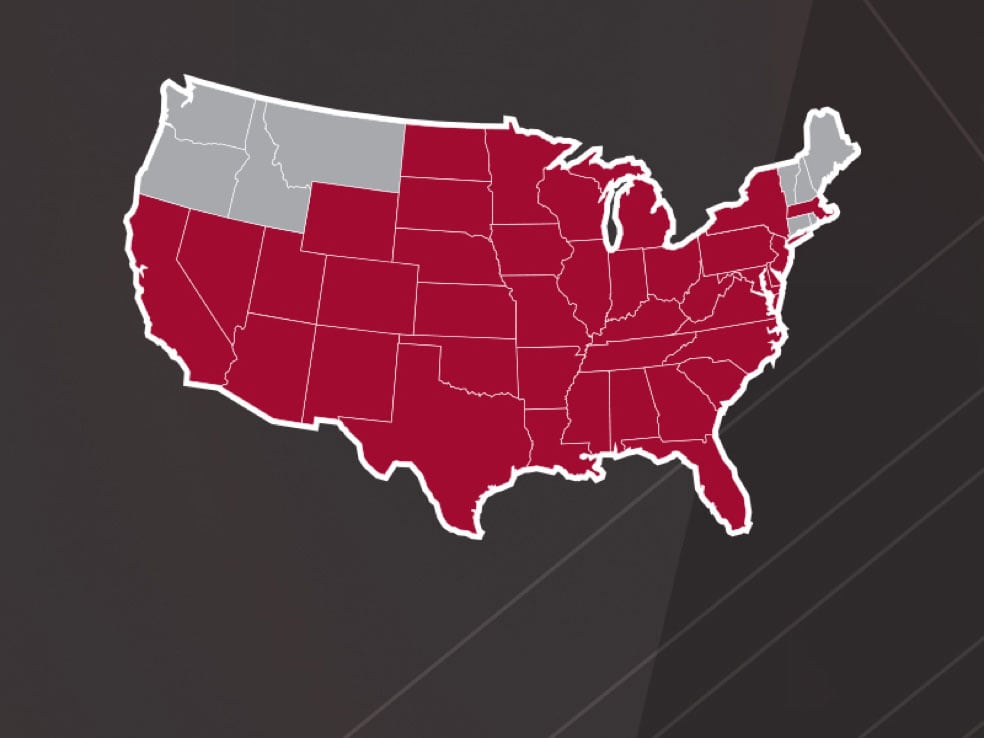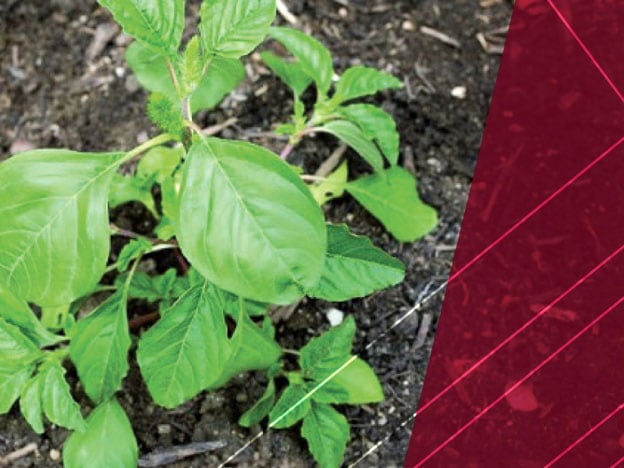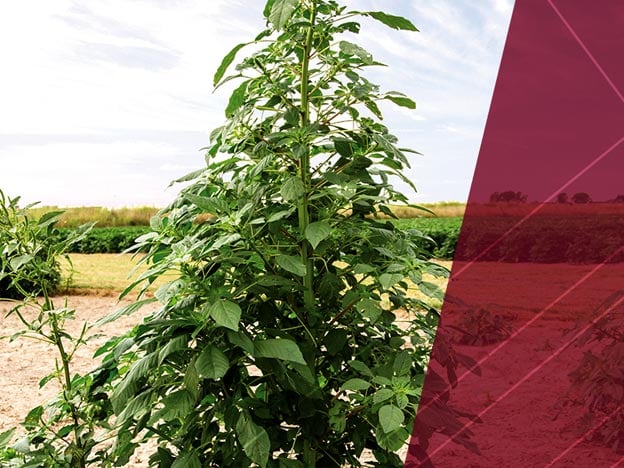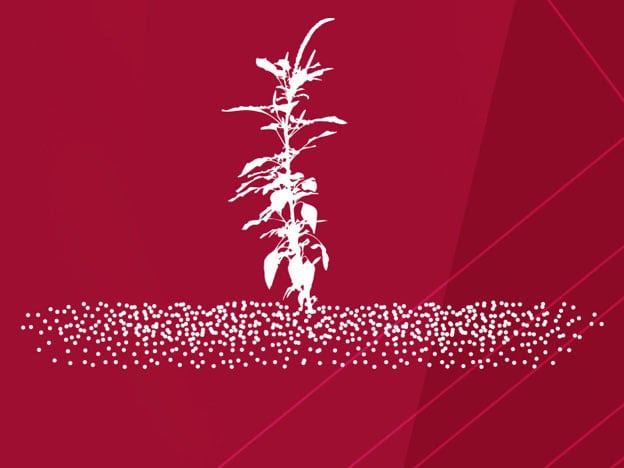
Weed Watch: Palmer Amaranth
- // Weed Management
Palmer Amaranth
Palmer amaranth, also infamously called Palmer pigweed, is well-known for its aggressive growth and can often seem overwhelming to farmers. But with a zero-tolerance policy against weeds, you can turn the odds in your favor.1,2

Native to the southwestern U.S., Palmer amaranth is now found in 39 of the 48 continental U.S. states.3
In soybeans, Palmer amaranth can create yield losses of up to 79%.2,4
Young Plants
Often confused with similar weeds, plants can grow 2-3 inches per day. Leaves are diamond- to egg-shaped and often have a symmetrical leaf arrangement with a poinsettia-like appearance.2,5
Mature Plants
Uncontrolled plants can reach 10 feet, and no other pigweed species has terminal panicles that can reach 1-1/2 feet long.6
Seed Pain Points
A single plant can produce up to 1 million seeds and be responsible for generations of weeds in the same growing season.1,7
Keys to Managing Palmer Amaranth1, 3, 4
Rotate crops
to diversify herbicide programs and weed control strategies.
Start clean
with a burndown herbicide or tillage.
Apply a pre-emergence residual application,
using a residual product within 2 weeks before planting or prior to crop emergence.
Apply a postemergence application to target small weeds early,
before weeds grow taller than 4 inches.
Prevent Seed Production.
If weeds escape, use tillage or physically remove them before plants produce seed.
1 Crop Science (Sep. 10, 2019). Zero Tolerance Weed Control of Waterhemp/Palmer Amaranth. Retrieved from http://www.cropscience.bayer.us
2 United States Department of Agriculture (Sep. 10, 2019). Palmer Amaranth. Retrieved from http://www.fsa.usda.gov
3 Crop Science (Sep. 10, 2019). Palmer Amaranth on the Move in the Midwest. Retrieved from http://www.cropscience.bayer.us
4 Legleiter, T., Johnson, B. Purdue University — Purdue Extension (Nov. 2013). Palmer Amaranth Biology, Identification, and Management. Retrieved from http://www.extension.purdue.edu
5 Crop Science (Sep. 12, 2019). How to tackle waterhemp. Retrieved from http://www.cropscience.bayer.us
6 University of Missouri Division of Plant Sciences (Sep 10, 2019). Weed ID Guide, Palmer Amaranth. Retrieved from http://www.weedid.missouri.edu
7 Sosnoskie, L., Culpepper, S., Kichler, J., Webster, T., University of Georgia Extension (Feb. 1, 2014). The biology and ecology of palmer amaranth: Implications for control. Retrieved from http://www.extension.uga.edu
The System Proven to Fight the Toughest Weeds
Tough-to-control weeds like Palmer amaranth can cause significant damage to your yield. See how Roundup Ready® Xtend Technology stacks up against competitors when controlling Palmer amaranth and more.




